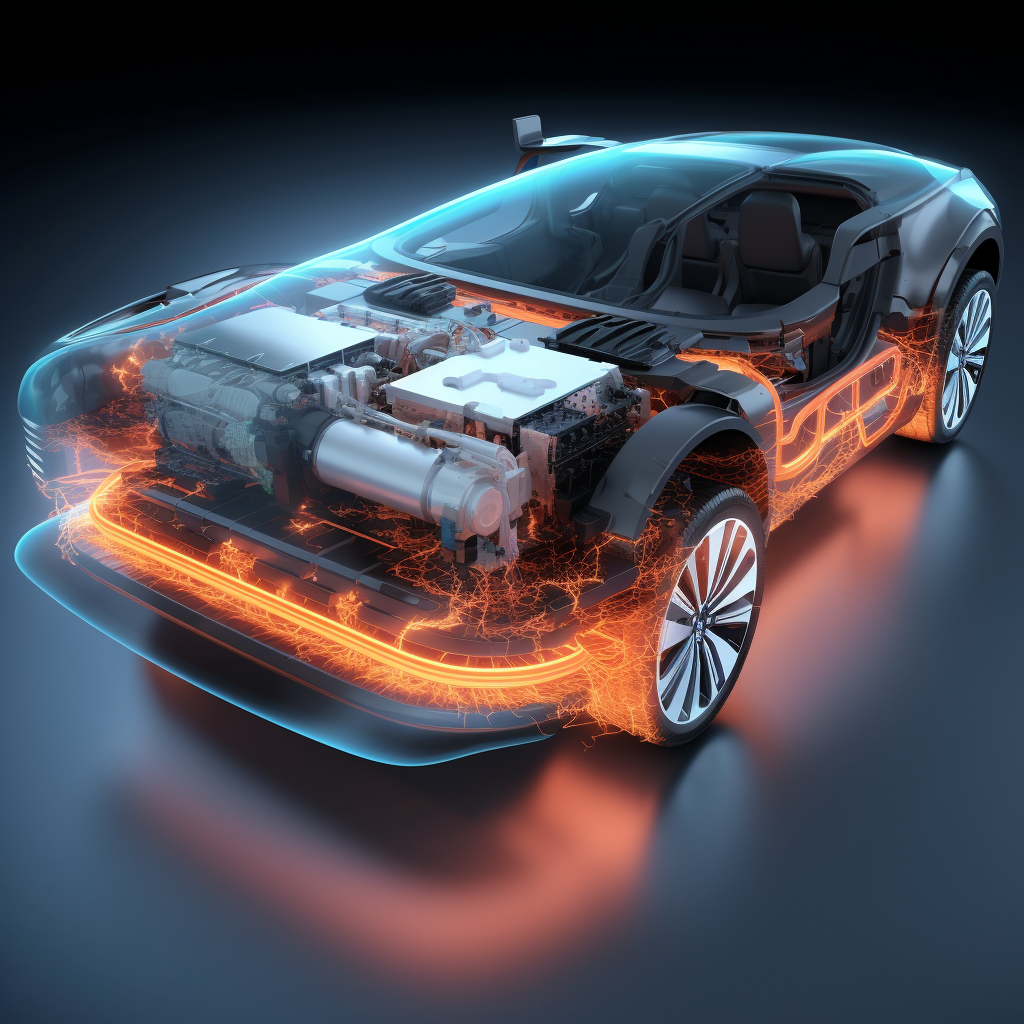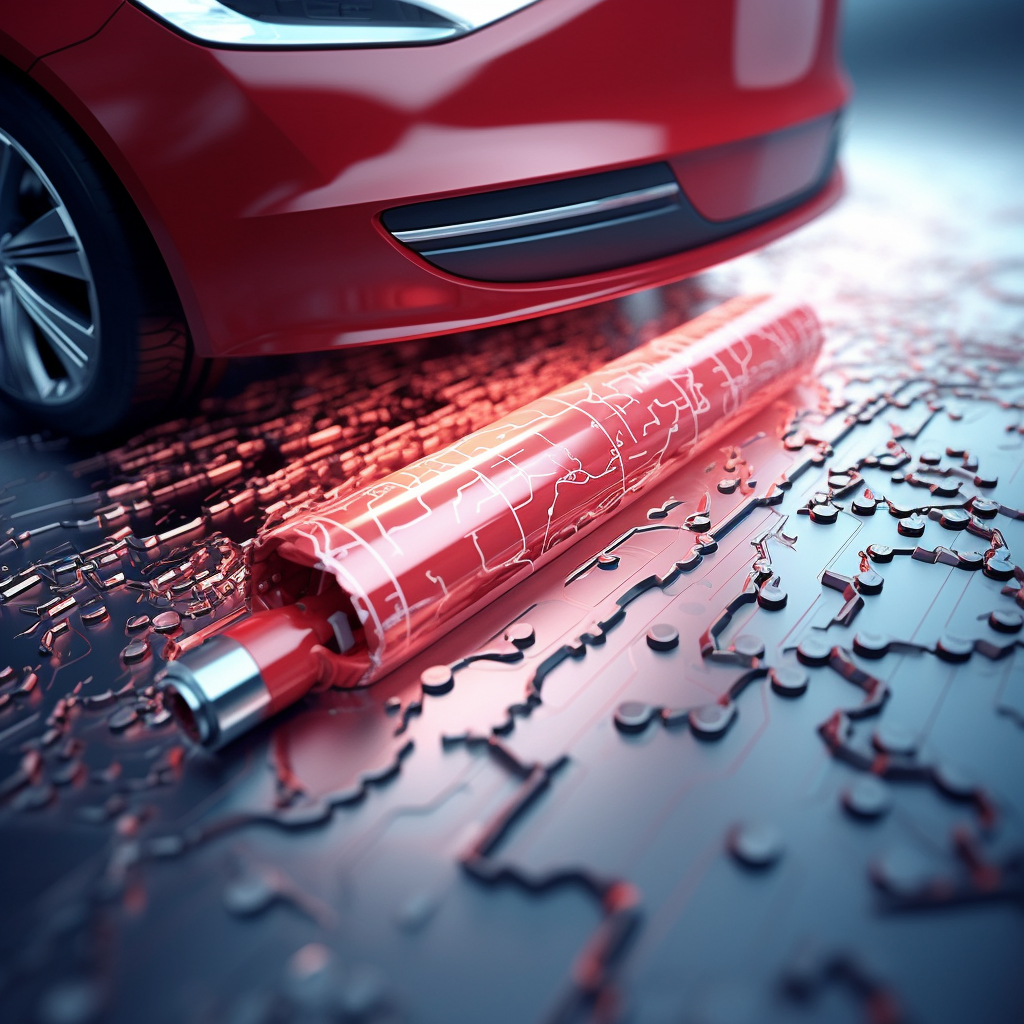Contents
Electric vehicles (EVs) are growing in popularity as an eco-friendly alternative to gas-powered cars. However, range anxiety and long charging times remain major adoption barriers for many drivers. The lithium-ion (li-ion) batteries that power EVs can take hours to recharge using standard Level 2 chargers. But fast charging enables an EV battery to be charged to 80% in under an hour. Unfortunately, fast charging can cause cracking and degradation in a li-ion battery’s cathode, which shortens battery life. Now, research shows that intentionally engineering cracks into the cathode can enable faster charging without damage.
Li-ion batteries consist of two electrodes – a positively charged cathode and negatively charged anode, separated by an electrolyte-infused separator. The most common cathode material in EV batteries is nickel manganese cobalt oxide (NMC). But repeated fast charging causes lithium ions to rapidly enter and leave the cathode. This builds up stresses that can cause cracks and fractures in the cathode particles. These cracks lower the battery’s capacity and performance over time.
However, a cathode intentionally built with gaps and cracks allows for expansion and contraction without further damage during fast charging. This “cracked cathode” design is poised to make EV battery charging 5-10 times faster while increasing battery lifespan. This article will explore the promise and challenges of cracked cathodes to accelerate EV adoption through faster, safer charging.

Cathode Cracking Issues
Li-ion batteries power everything from laptops to EVs by shuffling lithium ions between the anode and cathode. Charging forces lithium ions into the crystal structure of the cathode, while discharging pulls them back out. Unfortunately, zooming lithium ions in and out of the cathode can cause cracking and fracture, especially during fast charging.
These cracks originate at the nanoscale but accumulate and propagate into larger fractures as charging cycles continue. The cracks disrupt electrical connections in the cathode, reducing the battery’s capacity to hold a charge. Cracked particles also lose active lithium, further degrading performance.
Additional electrolyte reactions at newly exposed surfaces inside the cracks also sap cycle life. Ultimately, extensive cathode cracking can cause capacity loss, power fade, and could even trigger thermal runaway events.
Cracking presents a major roadblock to extending EV battery lifespan. It worsens during fast charging, as rapid lithiation stresses the cathode microstructure. Minimizing cracking is therefore critical to enabling faster charge rates.
New Cathode Design to Address Cracking
To mitigate cracking, researchers are exploring cathode materials engineered with internal gaps and spaces. Intentionally building in “pre-cracks” allows the material to swell and shrink during lithium ion insertion without generating new damage.
One such design incorporates vertical cracks into each spherical cathode particle. This adds empty space to accommodate volume changes, just like gaps between bricks in a wall.
Another approach creates nanoscale bands of inactive material interleaved within the cathode. These inactive layers provide room for active material to expand while preventing crack propagation.
A cracked cathode can be manufactured through careful control of temperature, pH, and drying times during synthesis. The gaps enable stable cation intercalation even during fast charging.
In lab tests, cracked cathodes retained 84% capacity after 650 15-minute charging cycles. Whereas standard cathodes suffered severe cracking and lost almost half their capacity after only 100 similar cycles.
By mitigating degradation, cracked cathodes can support the ultra-fast charging demanded by EV drivers. Further optimization of the artificial cracks could maximize longevity even more.
Advantages of Cracked Cathode Approach
Intentionally cracked cathodes offer several key benefits in overcoming li-ion battery limitations for EVs:
Faster charging times – Built-in space for expansion enables intercalation of li-ions in minutes rather than hours. This allows EV batteries to be charged to 80% capacity in 10-20 minutes.
Longer lifetime – The engineered gaps minimize additional cracking from cycling stress. This increases the functional lifespan of the battery.
Improved safety – Preventing cracking reduces risk of material isolating and overheating. Stable cycling at fast rates lowers chances of thermal runaway.
Lower costs – Simpler synthesis and manufacturing is needed compared to heavily engineered solid cathodes.
Easier manufacturing – Cracked morphologies are produced using straightforward sol-gel methods, requiring no complex shaping or compaction.
With these advantages, cracked cathodes can help accelerate the shift to EVs by making convenient ultra-fast charging a reality.
Challenges and Limitations
However, some challenges remain to be addressed before cracked cathodes become widespread in EVs:
Controlling crack formation – Consistently producing an ideal cracked morphology requires precise tuning of cathode chemistry and processing.
Crack stability – Larger cracks may grow in size over hundreds of cycles, reducing structural integrity.
High temperatures – Faster charging inevitably heats batteries more, which could still degrade the cathode over time.
Compatibility – Cracked cathodes may not be compatible with newer cathode chemistries like nickel-rich NMC.
Performance tradeoffs – Cracks reduce the overall energy density of the cathode, limiting range somewhat.
Cost barriers – Retooling manufacturing lines for cracked cathodes requires significant upfront investment.
While cathode cracking enables faster charging, high temperatures and long-term stability still need to be addressed. Additional innovations in cooling systems, electrolytes, anode materials, and charging protocols will help maximize performance.
Research and Commercialization Efforts
Various research groups and battery startups are racing to develop commercially viable cracked cathodes.
The concept was first demonstrated in 2018 by a team at Penn State University. Their pilot-scale research defined synthesis procedures and performance capabilities.
Several companies now aim to scale up manufacturing. For example, Israeli startup Addionics applies machine learning to optimize crack formation for high-speed charging. Ampcera is also working on flawed cathode powders.
Automakers like Mercedes are testing prototypes with cracked cathodes that could enable charging times competitive with gas refueling. Battery giant BASF is accelerating R&D on intentional inhomogeneities.
If ongoing enhancements can improve crack stability and energy density, pre-cracked cathodes could be installed in production EVs within 5-10 years. Costs should also decline with manufacturing scale-up.
The Future of Fast-Charging EVs
Experts project that introducing intentionally cracked cathodes could soon enable EV charging at speeds 5-10 times faster than today’s rates. This would expand driving range and reduce charging time to just 10-20 minutes.
Combined with advances in cooling systems and cell chemistry, cracked cathodes can help allay range anxiety concerns for potential EV buyers. Ultra-fast charging unlocks new vehicle applications like electrified aviation.
However, cathode cracking is just one piece of the puzzle. Continued innovation across batteries, motors, and infrastructure is critical to maximize performance.
Holistic approaches can optimize charging speed without sacrificing safety or battery lifetime. Future EVs may also allow battery swapping and employ smart charge scheduling.
With ongoing research, cracked cathodes and other emerging technologies promise to revolutionize EV charging. The age of convenient, ultra-fast charging could arrive within the next decade, helping accelerate the transition to sustainable electric transportation.

Conclusion
In summary, cracking and fracture of li-ion battery cathodes poses a major obstacle to faster EV charging. Intentionally engineering cracks into cathodes provides extra space to accommodate cycling stresses. This “cracked cathode” approach enables stable ultra-fast charging up to 5-10 times faster than current rates.
Built-in cathode cracks show potential to give EVs 180+ miles of range in just 10 minutes of charging. This could finally deliver the convenient charging that consumers expect. Combined with other innovations, cracked cathodes are poised to help EVs realizes their promise of clean, convenient, sustainable transportation. Ongoing research to enhance manufacturing, cost, and long-term stability will be critical to translating this technology to market.
References:
- Gao, Huajian, et al. “Fast lithium growth and short circuit in lithium batteries.” Journal of Applied Mechanics 84.10 (2017).
- Yan, Pengfei et al. “Fatigue-induced fast Li growth and swelling in Li metal anodes.” National Science Review 7.5 (2020): 1280-1287.
- Li, Yan et al. “Designing artificial solid-electrolyte interphases on graphene anode: towards fast lithiation kinetics for high-power lithium ion batteries.” Journal of the American Chemical Society 139.33 (2017): 11550-11558.
- Guo, Shenyang, et al. “Highly stable interfaces between a solid polymer electrolyte and a lithium metal anode enabled by interconnected porous network.” Energy Storage Materials 45 (2021): 498-505.
- Liu, Yang et al. “Uniformly dispersed sulfur in layered cathode oxide: highly stable performance in lithium sulfur batteries.” ACS omega 3.1 (2018): 272-281.

